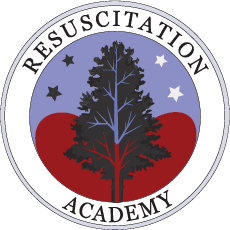Programs
Cardiac Arrest System Self-Assessment
Helping communities prioritize Chain of Survival improvement efforts
Survival from Out-of-Hospital Cardiac Arrest (OHCA) may be improved when best practices are implemented.
Knowing where, and how, to begin isn’t always clear.
Our tools and services help communities prioritize Chain of Survival improvement efforts.
Without measurement, there can be no improvement
Survival from Sudden Cardiac Arrest is unacceptably low — averaging less than 10%. Based on existing science and practices, communities may increase survival by 50%.
The Resuscitation Academy Cardiac Arrest System Assessment Program consists of tools and services to help identify focus areas for communities to mature their Chain of Survival.
Self Assessment (Free)
Gain insights with our free Self-Assessment. Includes prioritized recommendations for strengthening your chain of survival and sending more cardiac arrest patients home to their families.
30 questions. Valuable insights.
For most U.S. communities, survival rates for VF witnessed cardiac arrests are dismal — averaging less than 10%. So how can EMS professionals transform the way we manage cardiac arrests and move the needle on survival rates?
AREAS OF FOCUS
For most U.S. communities, survival rates for VF witnessed cardiac arrests are dismal — averaging less than 10%. So how can EMS professionals transform the way we manage cardiac arrests and move the needle on survival rates?
Start with this 30-question assessment to evaluate five key elements spanning the chain of survival:
Cardiac Arrest Registry
Telephone CPR
Rapid dispatch
High-performance CPR
Strategies to increase early CPR and AED
Assessment results provide insights into the effectiveness of your community’s current approach, and offer recommendations for improvement. Additionally, they foster much-needed conversation between your agency, elected officials, community leaders, and healthcare professionals to develop a concrete plan of action to improve survival.
Assessment Options
Your role in the community may determine how you choose to conduct this assessment. Use the following as a guide, but feel free to take whatever approach will drive the most accurate results based on your organization’s needs.
Individual assessment
No single individual can implement improvements to cardiac arrest protocols in a community. However, you can use the results of this assessment as a data-driven conversation starter to open the door to discussion and coordination of resources to help drive real change. Suggested for: EMS Chiefs, Medical Directors, Quality Improvement Managers
Group assessment
Bring your team together to discuss to discuss each of the 30 questions. This exercise allows the group to deliberate over each question and include multiple points of view before reaching a consensus.
Personnel to include: EMS Chief, Medical Director, Quality Improvement Manager, Cardiac Arrest Registry Coordinator, EMS Training Officer, Dispatch Director(s) for Primary and Secondary PSAPs, official responsible for Law Enforcement CPR and AED training/response, person responsible for community CPR training, person responsible for applications such as PulsePoint.
Comparative assessment
Assign the assessment to battalions to complete individually, then compare the results to gauge consistency of each team’s knowledge and approach system-wide. Interested in benchmarking?
Prepare to Assess
Depending on how you choose to take the assessment, it will require anywhere from 15-30 minutes to complete.
You can speed the process and increase the value of your results report by having the following information readily available:
Population for your response area.
Population density for your area.
Average response time for the first arriving unit staffed with EMS personnel. This is the interval of time from alert to arrival on scene.
Annual number of cardiac arrests (defined as having received CPR by EMS personnel).
Annual number of cardiac arrests survived to discharge from all rhythms.
Annual number of VF cases, including all cases where the patient presents in a shockable rhythm.
Annual number of witnessed VF cases discharged alive (if unknown, use all cases of VF).
Annual Number of cardiac arrests that receive bystander CPR.
Annual Percentage of cardiac arrests receiving public AED prior to arrival of EMS or police.
If some of this information is inaccessible or unknown, the assessment tool provides the option to use national average data. Note that you can update any fields with your system’s data at any time.







